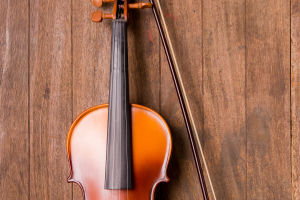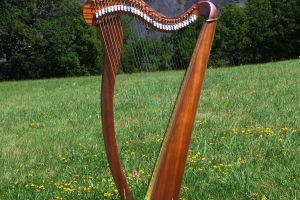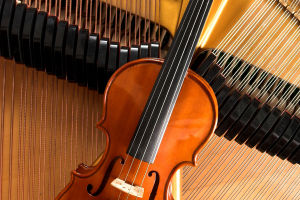
Violin Evolution and Impact

The violin, a string instrument, is hailed as the king of all instruments.
It is one of the most iconic instruments in music, boasting extensive applications and expressive capabilities.
Let's delve into its evolution and history together!
The violin, with its graceful sound and versatile playing techniques, is a beloved instrument widely used across various musical forms. It plays a crucial role in classical music, jazz, pop, and folk music, among others.
In classical music, the violin is indispensable in orchestras and is a primary instrument in many solo pieces. In jazz, it is often used for accompaniment or solo performances. In pop and folk music, the violin's usage is diverse, serving not only as the primary instrument for melody but also enriching harmonies.
Related
 Join us to uncover the stories of classical music: embrace its accessible beauty!
Join us to uncover the stories of classical music: embrace its accessible beauty!
 Let's delve into the difference between sunrise and sunset charm.
Let's delve into the difference between sunrise and sunset charm.
 Explore the Harp's Journey: From Folk Roots to Symphony Stages, a Story of Musical Evolution.
Explore the Harp's Journey: From Folk Roots to Symphony Stages, a Story of Musical Evolution.
 The best shots of city night landscapes are taken when it's dark, not after it's dark.
The best shots of city night landscapes are taken when it's dark, not after it's dark.
 Exploring scientific principles behind diverse musical instrument sounds fosters innovation.
Exploring scientific principles behind diverse musical instrument sounds fosters innovation.
 Can guests take the stairs? There are 1,076 steps inside the Gateway Arch.
Can guests take the stairs? There are 1,076 steps inside the Gateway Arch.
As an ancient instrument, the violin has a long history and rich cultural heritage. Since the 15th century, when the modern violin was first crafted by the Amati family in Italy, this instrument has been popular worldwide. By the late 16th to early 17th centuries, Italian craftsmen began shaping the prototype of the modern violin, gradually refining its design and sound.
The craftsmanship of violin making saw significant advancements, with renowned violin makers like Stradivari, Amati, and Guarneri creating many classic violins. These instruments possess unique tones and performance qualities, becoming classics in the history of music and widely used in various musical performances and recordings.
Throughout the evolution of the violin, new technologies and equipment have been introduced, such as adding four strings and improving bow designs and bridge structures, all contributing to the continuous improvement of the violin's sound and performance.
Impact of the violin:
1. Promoting music education: The violin, as a traditional Western instrument, is widely used in music education, becoming a fundamental course in many music schools and institutions. By learning the violin, people can better understand music theory and performance techniques, benefiting from music education.
2. Enriching the music industry: As a popular instrument, the violin plays a vital role in the music industry. Many musicians and orchestras use the violin as their primary instrument, driving the market demand for violin performance and production.
3. Inspiring enthusiasts' passion: The violin is widely used in various types of music performances. Violin music has a unique emotional appeal, often inspiring emotional resonance in audiences, and fostering a greater love for music.
4. Transmitting cultural heritage: As a traditional instrument, the violin represents an important part of European culture. By playing violin music, people can better understand European cultural heritage and pass it on.

5. Enhancing aesthetic awareness: Elements such as harmony, melody, and rhythm in violin music can cultivate people's aesthetic awareness, enabling them to appreciate and love music more.
The beautiful melodies of the violin traverse the river of time, continually inspiring people's love for and exploration of music. As a treasure in the world of instruments, it not only carries a rich historical culture but also serves as a bridge connecting people's emotions. In the sound of the violin, we feel the power of music and savor the beauty of life.
Let us continue to listen, continue to play, and use the language of music to convey emotions, perpetuating the inheritance of culture.